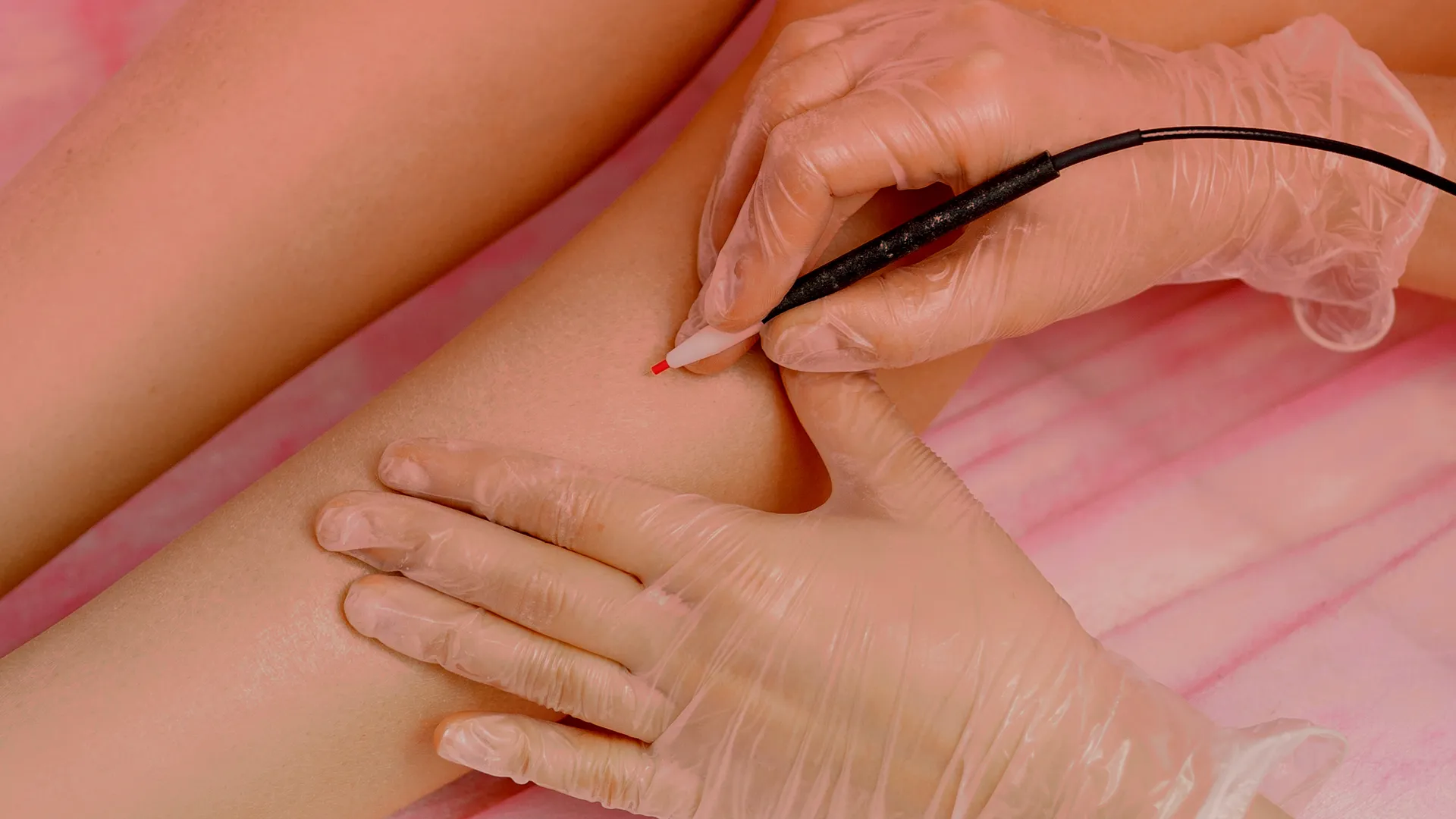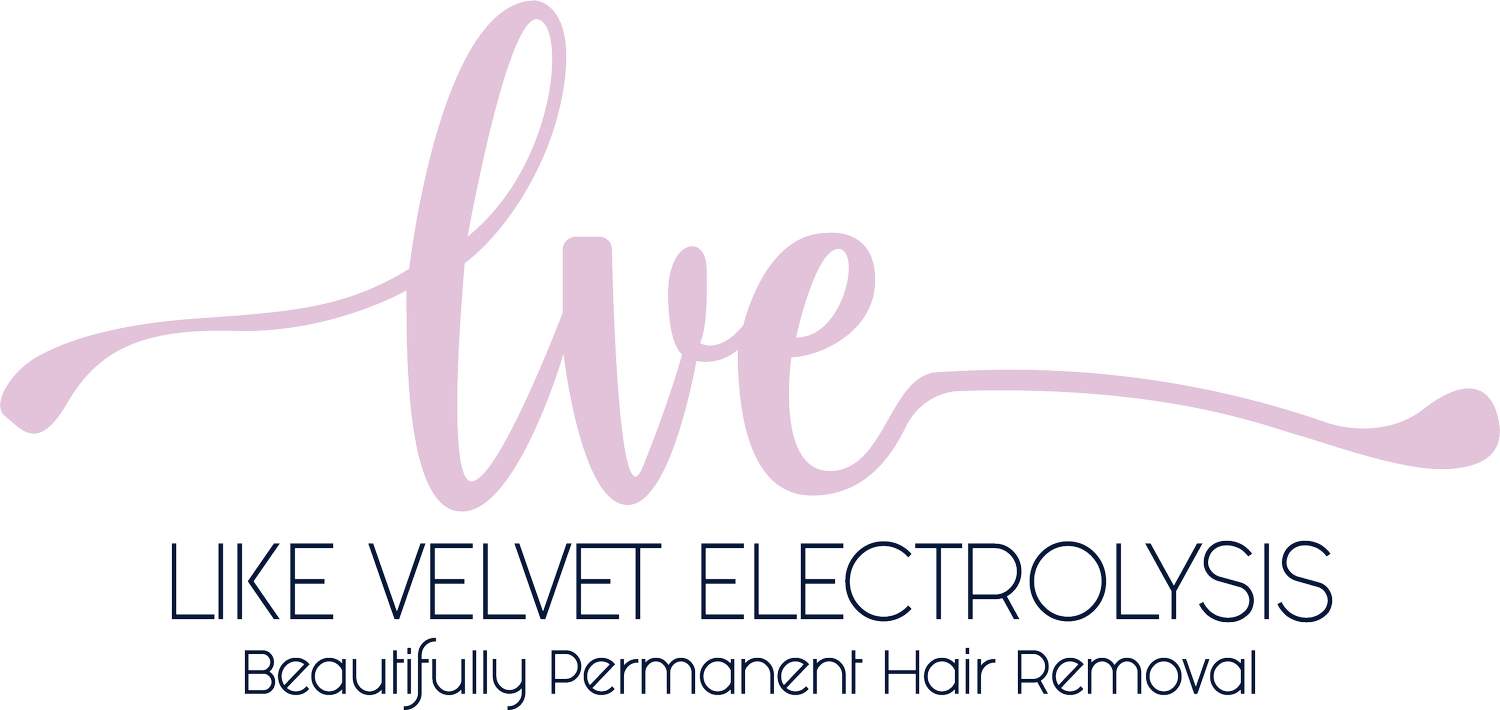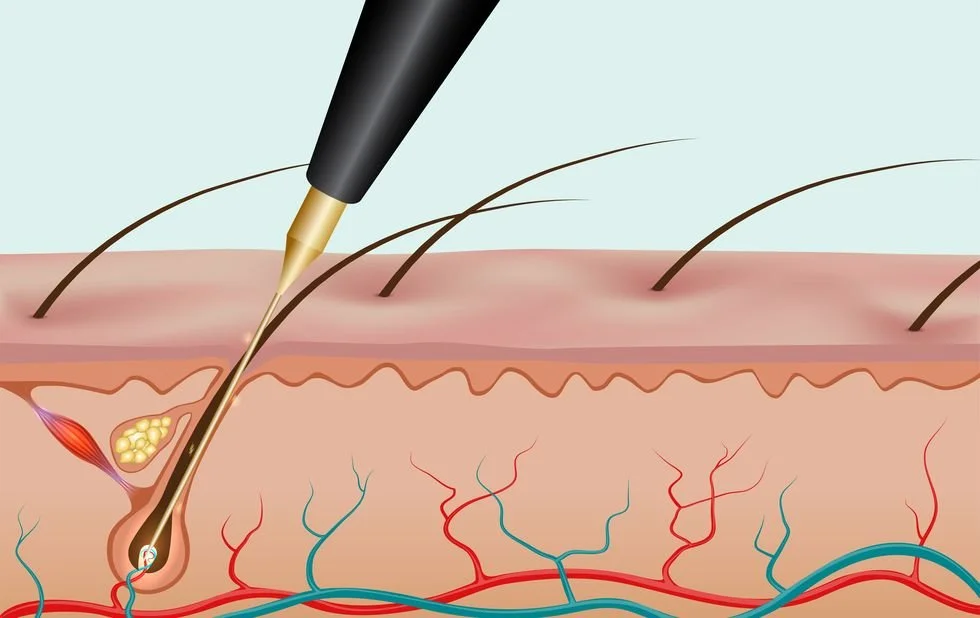
Frequently
Asked
Questions
Answers to the questions are for informational purposes only and not intended to provide a diagnosis or define a treatment.
-
Electrolysis has been in use for the last 140+ years. It is safe, effective, and the only method of hair removal that is considered permanent by the Food and Drug Administration (FDA) and the American Medical Association (AMA).
A very fine filament, called a probe, is inserted into the hair follicle alongside the hair shaft. A tiny amount of electrical current is then applied, destroying the cells at the base of the follicle that are responsible for hair growth.
-
During treatment, you'll feel a slight pinch that is slightly uncomfortable but should not be painful. You should not feel the insertion of the probe into the hair follicle or a tweezing of the hair as it’s being removed. The hair should easily slide right out of the follicle if it’s been effectively treated. Discomfort is minimal for most people, but keep in mind that some areas of the face and body are more sensitive than others and that individual tolerance varies greatly. Some people listen to music or a podcast or even take a nap!
-
The number of treatments needed will depend on several factors, including the amount of hair in the area being treated, genetics, hormones, lingering effects of any prior hair removal methods, sensitivity level, and the hair growth cycle which can range from 3-12 weeks. Because of these variables, multiple treatments are necessary.
-
The frequency and length of your appointments depend on the size of the area being cleared and the progress of your treatment. In general, treatments are longest and most frequent at the beginning, then taper off as fewer and fewer hairs remain to be treated.
-
Laser – Electrolysis and laser hair removal are NOT the same thing, although this is a common misperception. Laser hair removal is classified by the FDA as permanent hair reduction. High-energy pulses of light are used to target the melanin, or pigment, in the hair and damage the root. Laser treatments are only effective on people with dark hair and ideally, light skin, which makes it easier for the laser to ‘find’ the hair. It doesn’t work on white, gray, blonde, or peach fuzz textured hair. People with darker skin (more melanin) run the risk of hypo-pigmentation, or white spots, if the laser can’t ‘find’ the pigment in the hair and attacks the pigment in the skin instead. There is also a risk of burns or scarring, especially on the face.
Waxing, tweezing, sugaring, threading – all of these are techniques that essentially yank the hair out of its follicle. This can lead to breakage, scar tissue around the hair follicle, distorted follicles, and ingrown hairs.
Electrolysis eliminates the hairs one by one. It is not a quick fix or one and done. It takes time, patience, and commitment to a proven and permanent process that will rid you of unwanted hair, forever!
-
Nearly everyone is a candidate for electrolysis. However, there are a few circumstances in which electrolysis isn't possible, may require a wait time, or need approval from your physician. For example, recent use of retinol products, Botox, active skin inflammations or infections, certain medications, and some medical conditions or devices. Please read the 'before your appointment' section for more information.
-
Above the neck:
Eyebrows, chin, jawline, upper and lower lip, sideburn area, hairline, and throat with the exception of inside the nose, ears, or eyelashes.
Below the neck:
Shoulders, back, chest, breast, stomach, underarms, arms, hands, legs, feet, fingers, toes, buttocks (cheeks), and bikini line (no genitalia).
Electrolysis works HAIR BY HAIR!



